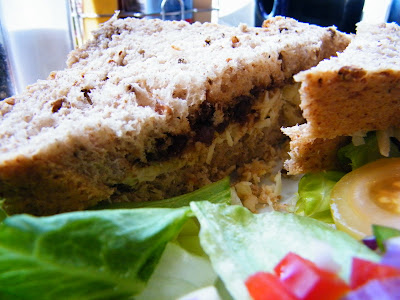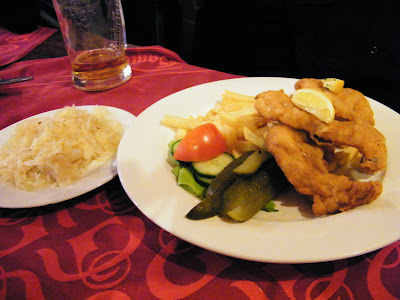
The Lanes in Brighton, what is now a charming resort city on the English Channel, is the oldest part of the medieval town—a twisting web of narrow streets given over to shops, pubs, clubs, bars & restaurants and the tourists and locals they serve and entertain. It’s a wonderful, attractive neighborhood.
The restaurants are of every ethnicity and style—pub lunches and fish & chips sprinkled a menu of Indian, Italian, Thai, American, Japanese, Chinese, North-African…among others. And a charming little French café, the Café Rouge: It sits on a corner at the north edge of the Lanes, and caught our eye with its red & white awning and tables under heat lamps—the weather was clear, bright, but it was still April, and a constant breeze kept down the temperature.
And, of course, there was escargot on the menu.

Ezra, his brother Kilian and friend from the city, Sayeeda, and I settled at an outside table an hour or so before sunset, ordered drinks and a pate. The people-watching was wonderful; we were right at that entrance to The Lanes that leads to the principal clubs and music venues
The pate was very good—a chicken liver pate with caramelized Roscoff onion and chutney. The bread was fresh and slightly warm, the onion and fruitful chutney light, though anything but subtle over the rich liver.
And I got my escargot—a half dozen snails in pesto, basil, parmesan and pine-nuts…and presumably garlic, I don’t know. Perhaps I’ve asked too much of my palate for too long, upped the garlic use like an addict and a little bit doesn’t register anymore…maybe; but, still, I would have liked something more sensuous than this particular sauce that, under-garlicked, detracted from some pretty good snails and no real companion the café’s good bread.
The Steak-frites I ordered was fun—like the other dishes we had, enough French in the enterprise and the food to bring to mind that other place and its cuisine.

chose the peppercorn sauce over Bernaise, red-wine, and a few other, sauces . The steak was nicely fried—a thin cut, a minute-steak, it was not tough but only teasingly tender. The sauce was thankfully not as understated as the escargot’s, and complemented the frites—which were plentiful on the plate in this traditional dish.
I’ve enjoyed better, and experienced more mundane, presentations of this in French brasseries: Café Rouge does a good and effective meal.
Author’s Note: I’ve eaten in Brighton in the dead of Winter. It’s not the same as the carnival plsce which is almost a city-beach for Londoners in the summer. Its history and elaborate Promenade, the great entertainment Pier jutting from it…its charming appearance in many films (my favorites are “Genvieve” (1953) and “Quadraphenia” (1979)) draw tourists all year round. In Winter though, the city is somewhat muted as is the rush of tourists; when the winds from the Channel burst cold through the streets the pace is largely local—there’s less frenzy in the welcome and more genuine warmth in the pubs and bistros.
I can’t imagine anything more fun than on a December night sitting in the Café Rouge’s “period” dining room—intimate, with décor from the continent, as well as close attention to the customer…very little French-for-the-English about it—and having a Calvados after escargot and Steak-frites.
I’ll eat there again—a pleasant experience.

















































